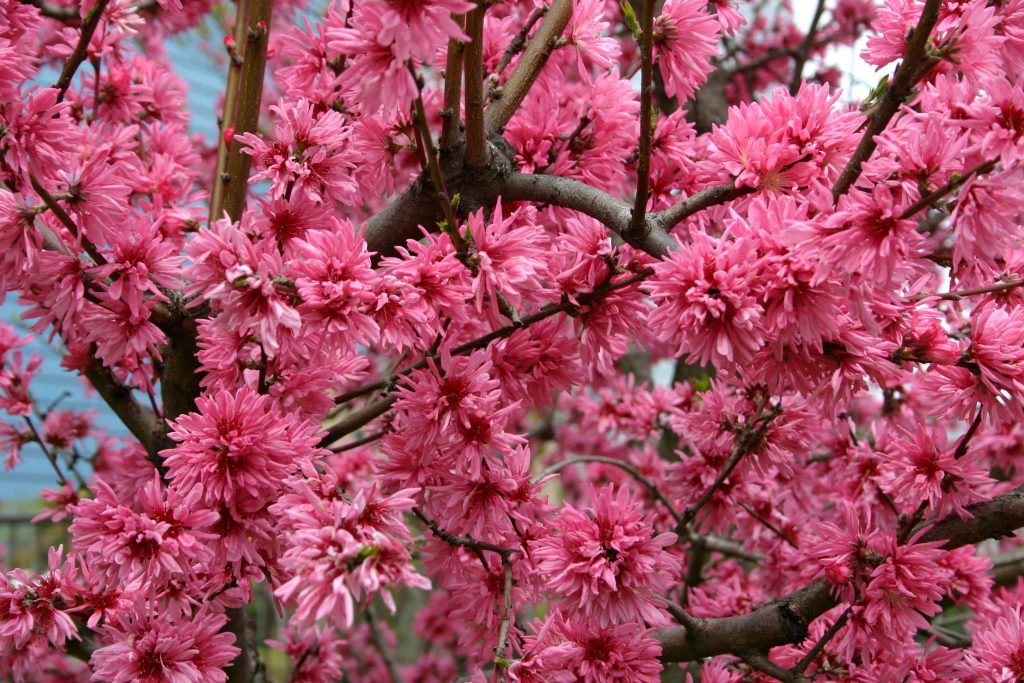
Hanamomo is in full bloom without waiting for the cherry blossoms to bloom. Peach blossoms are not flowers that disperse in a blink of an eye like Yoshino cherry trees, and begin to bloom a little earlier than Yoshino cherry trees in late March to May in the spring, and continue to bloom even after Yoshino cherry trees have dissipated. Hanamomo, which has been improved exclusively for viewing flowers, has single-flowered and double-flowered flowers, and the colors of the flowers are also gorgeous pink, white, and red. In addition, there are many varieties, including weeping varieties and purple-tinted leaves. Peach has been popular with Japanese people since ancient times, but ornamental Hanamomo has been improved since the beginning of the Edo period. Since then, breeding has not progressed much, and most of the horticultural varieties currently cultivated are those produced in the Edo period.
ハナモモがサクラの開花を待たずして満開です。桃の花はソメイヨシノのように、あっという間に散ってしまう花ではなく、春3月後半~5月、ソメイヨシノよりも少し早くに咲き始め、ソメイヨシノが散ってしまったあとも咲き続けます。もっぱら花を観賞するために改良されたハナモモは一重咲き、八重咲きがあり、花の色も、艶やかなピンクや白、赤などがあります。さらに枝垂れる品種や葉が紫色を帯びたようなものまで、たくさんの品種があります。桃は太古から日本人に親しまれてきましたが、観賞用のハナモモは江戸時代に入ってから改良が進みました。その後は品種改良はあまり進んでおらず、現在栽培されている園芸品種は江戸時代に作出されたものがほとんどです。
